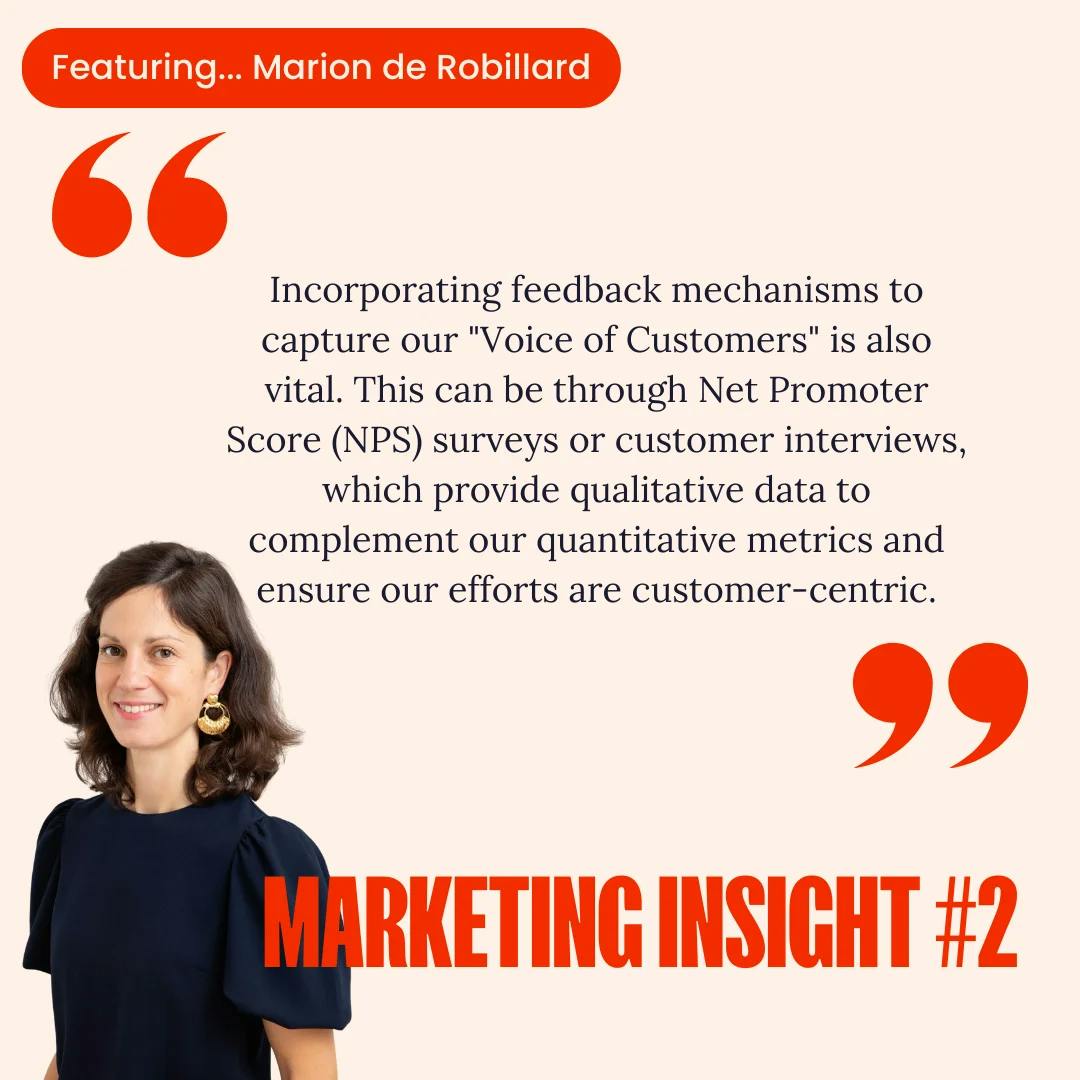Operator Insights: Achieving Optimal Marketing Impact
March 7th, 2024
We are lucky to meet and chat with accomplished individuals who have been there, done that, and lived to tell the tale. In this series we bring you the direct voices of operators in the trenches, allowing you to gain insights straight from the source.
Whether you are looking to optimize your Sales & Marketing, Finance, Operations & People, or a combination of these areas, then read on and remember to subscribe to our newsletter so that you don’t miss out on future nuggets of wisdom!
Let’s dive in…
Say hello to Marion de Robillard
Marion de Robillard is the Global Marketing & Comms Director at Qonto—the go-to solution for SMEs and freelancers who are looking to keep their business account and finance needs safely organized under one roof. Whether you work alone or in a team Qonto offers all the features you need including transfers, direct debits, and payment methods (including virtual and physical cards) to make managing your company's finances easy.
We had enlightening conversations with Marion, delving into strategies to amplify marketing impact. Along the way, we discovered it’s all about a blend of strategic planning and best practices. The key? Identifying your Ideal Customer Profile (ICP), aligning sales and marketing efforts, establishing fundamentals, setting clear objectives, and diligently tracking results. Sounds simple, right? However, in reality, it requires dedication, skill, and determination to stay at the top of your game.
Summary
- Collaboration between sales and marketing is a must:
- Implement cross-functional meetings,
- Jointly agree to priorities and OKRs (Objectives and Key Results),
- Gather and share results and successes.
- No matter how difficult it seems you should strive to identify your ICP so you can develop focused and effective marketing campaigns.
- In fast-moving businesses it is good to focus marketing efforts and budgets on shorter periods rather than attempting to plan for the whole year.
- Tailor your marketing strategy—know if your company is product or sales-led so you can develop appropriate strategies.
- Robust foundations are critical to future success!
Partech asks and Marion answers:-
Historically, there has been misalignment and lack of collaboration between sales and marketing in fast-growing startups. From your experiences, what strategies or best practices have you seen/learned about how companies can best, and most effectively convey the value of marketing to sales teams, to ensure alignment on key priorities?
Following my experience with fast-growing startups like TheFork, Trainline, and Qonto, I've consistently seen the value in fostering a strong relationship between sales and marketing.
- The first thing I've experienced is regular alignment sessions, where key priorities and OKRs are jointly set and reviewed. At TheFork, for instance, we implemented a bi-weekly cross-functional meeting that allowed for real-time feedback loops between the sales and marketing teams.
- At Qonto, a shared dashboard between sales and marketing clarified campaign impacts, fostering a shared success vision.
- Finally, the co-creation of content and sales enablement materials is key. At Qonto, we work closely with sales to develop customer case studies and targeted messaging, which helps sales articulate the value proposition more effectively. This collaborative approach ensures that our content is highly relevant and impactful.
ICP and buyer personas are important for startups and scale-ups but it can be hard to define them in a changing environment. Can you share insights or examples of how to define and refine the Ideal Customer Profile and buyer personas?
Defining an ideal ICP and buyer personas in a dynamic environment is indeed challenging, but it's also essential for ensuring the relevance of marketing efforts.
- At TheFork, I remember we started by analyzing our existing customer base to identify common characteristics and the most profitable restaurant segments. This involved close collaboration with sales and data science teams to extract insights and patterns and adjust our marketing and comms efforts.
- At Trainline and Qonto, we utilized (and continue to utilize) lots of customer surveys to validate and evolve our personas. Looking at market trends and competitor positioning helps us anticipate shifts in customer needs and preferences.
- Moreover, at Qonto, we’ve embraced a 'test and learn' approach, where small-scale campaigns are used to test hypotheses about our ICPs, and the results are used to iterate on our personas.
The efficiency of marketing strategies is sometimes questioned, especially when seeking financial efficiency. What are your top tips to track the efficiency of your marketing efforts?
To track the efficiency of marketing efforts, especially in periods where financial efficiency is necessary, I rely on a few core principles:
- Set clear KPIs: the basis is to define key performance indicators that are closely tied to both marketing objectives and business outcomes. This ensures that we measure what truly matters, such as customer acquisition cost, lifetime value, and conversion rates.
- Regular reporting and analysis: At Qonto, we have a routine of detailed reporting and analysis, which allows us to quickly identify underperforming campaigns and adjust strategies accordingly. This agility is crucial for maintaining marketing efficiency.
- Market feedback: Incorporating feedback mechanisms to capture our "Voice of Customers" is also vital. This can be through Net Promoter Score (NPS) surveys or customer interviews, which provide qualitative data to complement our quantitative metrics and ensure our efforts are customer-centric.
- Cross-functional collaboration: Working closely with finance, strategy, and sales to define and agree upon the metrics of success ensures our marketing strategies are aligned with the overall business objectives and that there is a shared understanding of what efficiency looks like.
Main takeaway
Whether you're steering the marketing efforts of a startup or managing an established brand, success hinges on common yet crucial practices. Collaborating across functions, maintaining clear communication with both internal and external stakeholders, and setting agreed-upon targets are foundational steps. Combine these with an early adoption of testing and a commitment to continual improvement, and you'll pave the way to maximizing your marketing impact.
A bit about Partech.
Over 40 years, Partech has built a team of independent thinkers to drive forward the technology landscape. Today, the firm looks as unique as its approach, with a range of funds and a portfolio of 220 diverse businesses across sectors in 40 countries across four continents. The Partech team looks to challenge founders, working with them side-by-side to drive digital transformation forward.
SUBSCRIBE TO OUR NEWSLETTER



